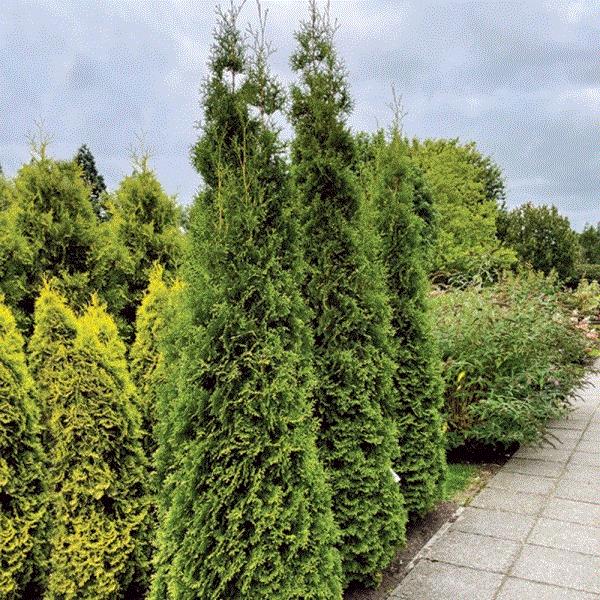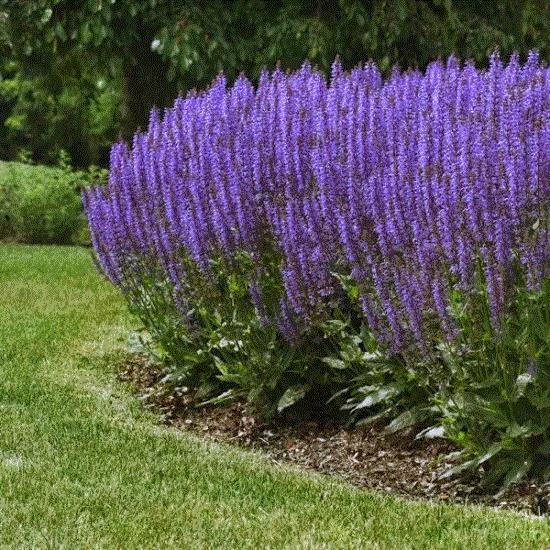MANTS – Back to "Normal"
In the last newsletter, I mentioned how impressive attendance was at MANTS, and sure enough, the 2023 Mid Atlantic Nursery Trade Show welcomed more than 11,000 attendees from January 11 through 13 at the Baltimore Convention Center. A sold-out trade show floor showcased more than 900 exhibiting companies in more than 1,530 booths. Attendees from 42 states and 14 foreign countries spent three days connecting with colleagues, discovering new products and seeking new plants, nursery stock, landscape and garden items, heavy- and light-duty equipment, tools, outdoor living essentials, and other allied industry products.
“The energy on the trade show floor was electric this year as our exhibitors and attendees reconnected with one another,” said MANTS Executive Vice President Vanessa A. Finney. “Business was booming and it was easy to see that all in attendance were excited to be back full force.”
Some interesting factoids related to attendees included:
-
More than 84.5% of MANTS attendees identified as either the final decision-makers or those who influence their companies’ purchasing decisions
-
More than 76.3% are categorized as owners, vice presidents, managers, buyers, or sales and marketing professionals
-
More than half of this year’s exhibitors had already renewed their exhibit space for the 2024 show
“MANTS 2023 has been the busiest we’ve seen in over a decade. It’s called the masterpiece of trade shows, but it really should be called ‘THE’ show in the horticulture industry,” said Tree Seather, Sales Vice President, Greenleaf Nursery Company. “If you miss out on MANTS, you miss out on all the new innovative and necessary products you need to grow your green business.”
MANTS returns to the Baltimore Convention Center January 10-12, 2024. For more information, visit www.MANTS.com.

Private Jet Arborvitae
As a plant geek, all of the new plants offered at MANTS are a highlight of the show. As a nursery production guy, I know that a number of these beauties will be a headache to propagate and finish due to a number of traits that just make these cultivars plain finicky. Fortunately, a new arborvitae from the Bloomin’ Easy folks seems to contain all the traits of a consumer-favorite conifer combined with excellent production traits.

Thuja occidentalis Private Jet, developed by Wilfried Oltmanns and licensed by Van Vliet New Plants B.V. to Boomin’ Easy, is just such a new cultivar. Developed from parent Thuja occidentalis Brabant, Private Jet has a very dense canopy, yet rapid growth rate (mature height of 20 ft. with a 5- to 6-ft. spread) that makes it preferable to consumers in Zones 3 to 7. It has a wide range of uses, including screening hedges, addition of structure to a small garden, a backdrop to a perennial border or as a centerpiece in a courtyard garden.
For producers, it roots reliably at nearly a 100% success rate in four to six weeks and fills a 3-gallon can in a single season, with little disease issues to speak of. Now that’s a great combination of traits for growers, too.
I certainly expect this to take off over the next few years as it becomes more well known in the marketplace and growers become more confident with its potential in production environments.

Salvia Blue By You
New(ish) from Darwin Perennials, Salvia xnemorosa (Salvia nemorosa x Salvia pratensis) Blue By You is considered to be an improvement on the widely popular cultivar May Night (AKA Mainacht). Blue By You is notably more compact than May Night with a more striking flower color compared to its predecessor.
Hardy across Zones 4b to 9a, Blue By You has a rounded form of about a foot in height with bloom spikes emerging above the emerald green canopy in May-June (depending on your location). Flowers are a medium to dark blue on 8- to 12-in. spikes held above the canopy that bloom over about a month. Once blooms fade, shearing spent blooms will trigger reblooming (multiple times) within a growing season.

Salvias of any species are excellent at attracting pollinators (including hummingbirds) while tolerating deer and rabbit herbivory. Blue By You is no different, and for many suburban gardeners, this is a huge selling point. Plant this (and most) salvias in full-sun locations with a well-drained yet moist soil for best performance and you’ll surely be impressed.

Carex for the Mid-Atlantic
The work being done at public gardens across America extends far beyond what the public sees when they stroll down paths or wander through conservatories. For more than two centuries, quite a bit of the taxonomic work and plant trials focused on native ornamental species has taken place (or been initiated) at botanical gardens and arboreta.
In some cases, this work has occurred at world famous and historic gardens such as The Arnold Arboretum. In others, such as Mt. Cuba Center that started trialing natives in 2002, the work may have a more recent start date, but the results are just as impressive and impactful.

Leading the way in trialing natives for landscape use since 2002 (although established 80 years ago) has been the Mt. Cuba Center. Looking back, there have been comprehensive trials on 12 native genera and/or species including favorites such as Echinacea spp., Hydrangea arborescens (and relatives), Phlox spp., Aster spp., etc. The latest trialing study to be released focuses on Carex spp. It includes 70 Carex spp. that were trialed over multiple years (2018-22) in sun and shade to evaluate horticultural qualities, vigor and adaptability. In the final year of the trial, they even conducted a mowing study, which yielded some interesting results!

The American Chestnut—A Real Quandary …
Most of us know the history of the American chestnut (Castanea dentata), which unfortunately mirrors other instances of species-specific pests/pathogens introduced to the U.S. Eventually, the pest/pathogen combination devastates a native species. Such has been the case with chestnut blight (American chestnut), Dutch elm disease (American elm) and emerald ash borer (a number of ash species), etc., etc. There's rarely a good outcome when these pest/pathogen complexes are introduced into environments with host species having no genetic tolerance to the pest/pathogen.
In the case of American chestnut, when it became apparent that without our intervention the species would be lost, concerned citizens and scientists formed the American Chestnut Foundation way back in 1983. The foundation funded research and developed a breeding program to introgress (move) genes from Chinese chestnut into American chestnut that allow Chinese chestnut to survive infections from the chestnut blight pathogen (Cryphonectria parasitica). The hope was that with time, the genes to tolerate chestnut blight could be moved into American chestnut without losing the iconic American chestnut "look" of the species.
But time has passed … and passed … and 40 years later plant breeding has yet to solve the problem (even though amazing progress has been made). It takes a long time to breed trees!

A New Hope
In steps biotechnology and ever-increasing capabilities to develop transgenic (an organism with genes from two or more species) plants. In the case of American chestnut, Dr. Kyra LoPiccolo and her team at the State University of New York, with funding from a number of resources, has developed a transgenic genotype (single tree—what we call a cultivar) that tolerates chestnut blights and reaches maturity! All it took was to insert a gene into American chestnut from wheat called OxO. This gene is responsible for producing oxalate oxidase, which breaks down oxalic acid (which allows the fungus to attack cells in the tree). Watch this brief animated video about the OxO gene and how it works.
Now, inserting the gene isn't easy because it has to be placed in just the right place in the genome. If it ends up in the wrong place, it can cause other genes to “turn off.” That’s not good, obviously. But after years of transformation and testing, Dr. LoPiccolo and her crew did it! They developed a cultivar called Darling 58 that contained the OxO gene from wheat that conferred tolerance to chestnut blight.
What’s more impressive is that the gene is transmitted in pollen, so 50% of seedlings developed using Darling 58 pollen will also be tolerant of chestnut blight. This means resistance can move into natural populations of chestnut with time (and a little help from us humans).
But (and there is always a but) there’s always a catch when working with transgenic organisms. You see, such organisms can’t just be released into the wild without first testing to see what (if any) negative effects this could have on the natural environment (more on this below). In the case of Darling 58, testing has been conducted with no harm to natural environments noted.
Yet there’s also the human component, which the U.S. Department of Agriculture, Animal & Plant Health Inspection Service terms a “public comment period.” This is when we get to chime in with our opinion regarding Darling 58 (and other transgenic American chestnut cultivars with the OxO gene). Do we have a problem with it? Will this one gene from wheat in American chestnut cause tidal waves and sinkholes across North America or result in deer becoming gluten-intolerant (that was a joke for those who need reassurance)?
In the case of Darling 58, you have until January 26 to comment on the approval (or disapproval) of releasing this transgenic cultivar (the comment button is just under the title) for use in wild spaces and landscapes. So, no matter your opinion, it’s important that you contribute to the discussion on this iconic North American native tree.

Our Wacky Wonderful World—Notes from the Edge of Sanity
Now, I get to express my opinion on the release of the American chestnut cultivar, Darling 58.
In general, I find this transgenic approval processes to be laughable. Why? Well now, let’s consider in relative terms how the introduction of an American chestnut with one gene from wheat is going to significantly impact the natural environment and native populations.
First, was it not the importation of wood from Asia by us enlightened humans that brought this pest/pathogen complex to North America in the first place? And as for changing the environment, I’d say the loss of four billion nut-producing trees altered the flora and fauna of much of North America dramatically and suddenly. Not reintroducing the American chestnut to wild lands because of one gene from wheat among the tens of thousands of genes in the chestnut genome would be silly. Actually, it would be irresponsible, given the historical status of this tree as a climax species in North American forests.
I just hope that for once, we humans can get out of our own way and do the right thing. While we’re at it, let’s reintroduce the wolf across the U.S. because I'm sick and tired of deer and wild hogs tearing up gardens. But I digress …
The hard truth is that we humans can’t fathom how much we've “altered” our environment. If you, as a horticulturist, were to go back in time to 1624 in Jamestown, Virginia, or 1542 in Point Loma, California, you would recognize very little of the flora and the biomes we know today. So why not give the green light to a marvelous species with the hopes of one day bringing back a little bit of historic wilderness in the Americas?





Live authentic,

Matthew Chappell
Editor-at-Large
Nursery & Landscape Insider
This has been received by 32,235 of the hardest-working horticulturists in show business!
If you're interested in reaching 32,235 clients who eagerly await every Nursery & Landscape Insider and surely read every word, contact Kim Brown ASAP and she'll hook you up.